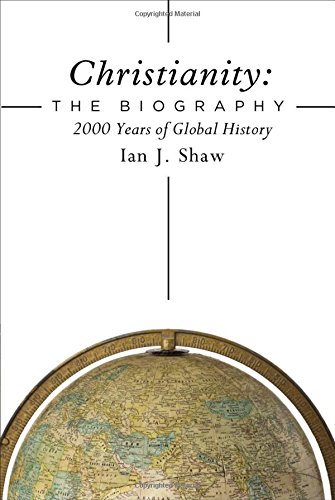Reviewed by Nathan Finn
The discipline of Christian history is in the midst of a paradigm shift. It used to be that Christianity was treated as a movement that began in Palestine in the first century, became mostly European over the next 1500 or so years, expanded to North and South America during the fifteenth and sixteenth centuries, then really went global in the nineteenth century with the rise of the so-called modern missions movement. The upshot was a fairly Eurocentric reading of Christian history wherein the story of Christianity substantially overlaps with the story of Western Culture, but with more emphasis on religion.
Nobody really believes this narrative is true anymore, largely due to the insights of historians of mission such as Andrew Walls and Dana Robert. Most historians now agree that Christianity has always been a global movement that has been more diverse geographically, ethnically, and even theologically than was once assumed. Unfortunately, most surveys of Christian history either perpetuate the outdated Eurocentric paradigm or overcorrect by advancing a more pluralistic narrative where every semi-Christian sect in Northern Italy is as important as the Council of Nicaea. In part for this reason, I don’t know a single historian who enjoys selecting their textbook.
Ian Shaw is a historian who served for nearly a decade as director of the Langham Partnership UK Scholars Ministry, an organization dedicated to training scholars to work in evangelical seminaries in the Majority World. He was recently named provost of Union School of Theology, a combination evangelical seminary and lay minister training center based in South Wales. His latest book, Christianity: The Biography: 2000 Years of Global History, is the short Christian History textbook that many of us have been waiting for.
There are so many helpful facets of Shaw’s book. To begin with, he writes Christian history as an unequivocally Christian historian. He makes his faith presuppositions clear in his introduction, but keeps his narrative empathetically descriptive, avoiding the temptation to either “preach through history” or to write as if God’s providence doesn’t exist (or at least matter). Also, he sticks to the grand narrative, focusing on key figures, themes, ideas, and controversies. Survey texts become too unwieldy when they try to do the work of a monograph and dig too deeply. But two additional qualities really stand out about Shaw’s book: the structure and the scope.
First, the structure. Shaw frames Christian history as a biography, progressing from the cradle to maturity. (Not the grave—this is Christian history!). This is a helpful strategy for capturing the metanarrative of the progress and development of Christianity, it is replicated at the more contextual level as Christianity becomes a new movement in new regions, and it’s easy to follow, all of which equals a “win” in a survey text. He captures some of the punchy narrative that has made Justo Gonzalez’s The Story of Christianity such a widely used textbook, but does so more concisely and with more conservative presuppositions.
Then there is the book’s scope. Shaw frames Christianity as a global movement from the first century to the present, avoiding the pitfalls I mentioned in my opening paragraph. Shaw doesn’t tell the Triumph of Western Culture with Jesus’ Help, but tells the story of the advance of Christianity as a global movement, beginning with the earliest generations of believers. We learn about Asian and African forms of Christianity that predated modern missions. We see how Christianity took root in diverse cultures, telling the same story but in a variety of different ways. We discover that Christianity has always “gone viral,” even if the specifics have varied over time. This is a far better story than the one my seminary textbooks told. And it’s a story that more ministerial students, pastors, and thoughtful lay leaders need to hear.
Christianity: The Biography is the ideal size for a one-semester survey class in a university or seminary. I’ve already adopted it for my Survey of Christian History course this coming fall. It is probably too short for a two-semester survey course, which is common in evangelical seminaries, but it could perhaps work in some contexts with significant supplemental readings. Shaw’s book is also great for use in a local church setting, a reading group, or even as a textbook for Christian high school or homeschool students. In many ways, Christianity: The Biography serves as a fine successor to Bruce Shelley’s beloved Church History in Plain Language, meeting the same sort of need, but taking into account the direction the discipline is heading. And that is high praise, indeed.
Nathan A. Finn is dean of the School of Theology and Missions and professor of theological studies at Union University in Jackson, TN.
